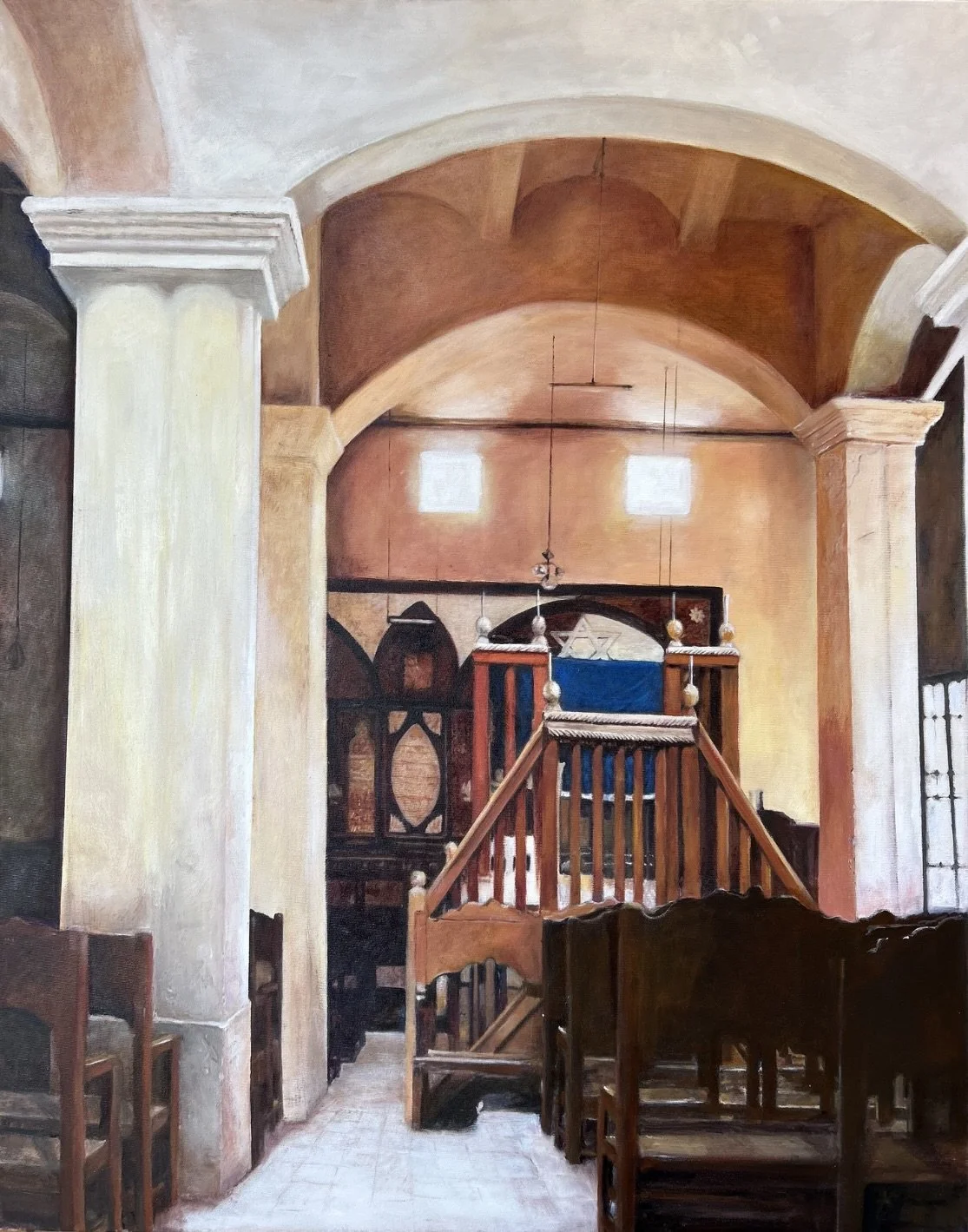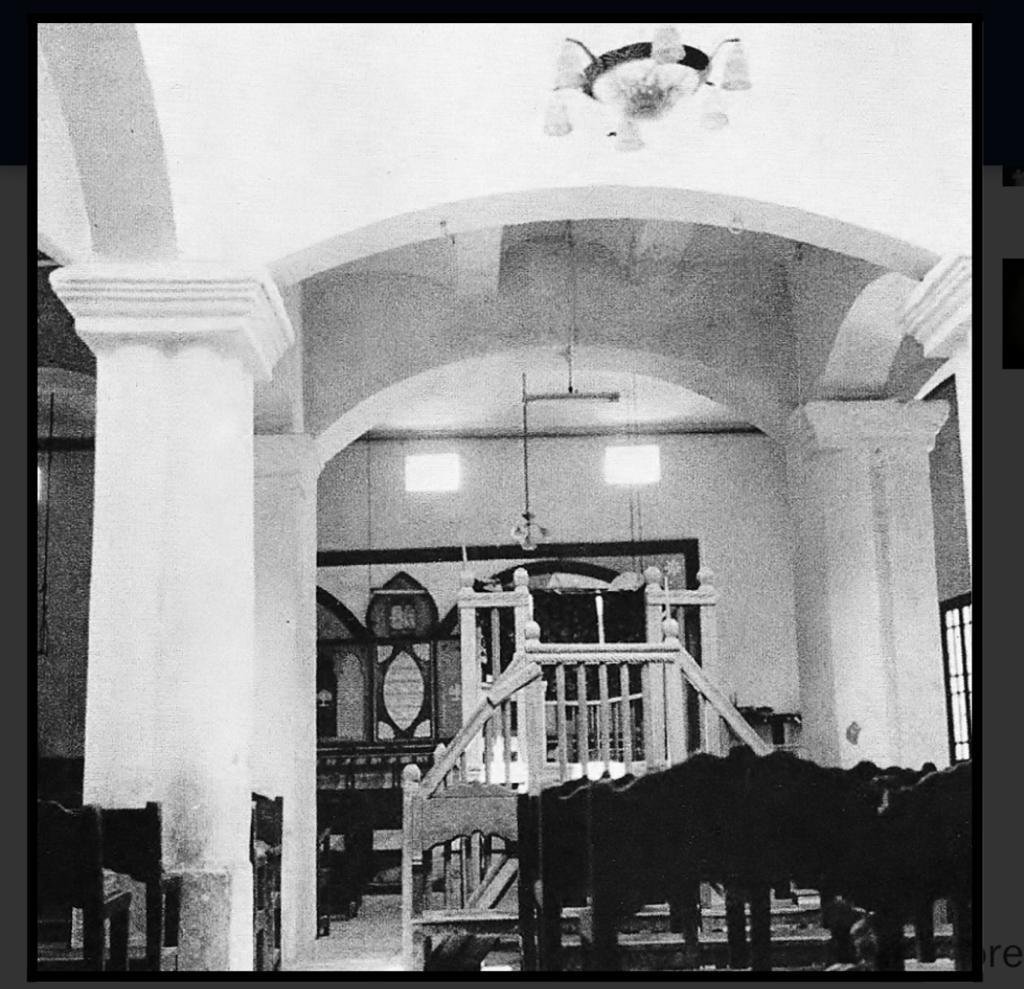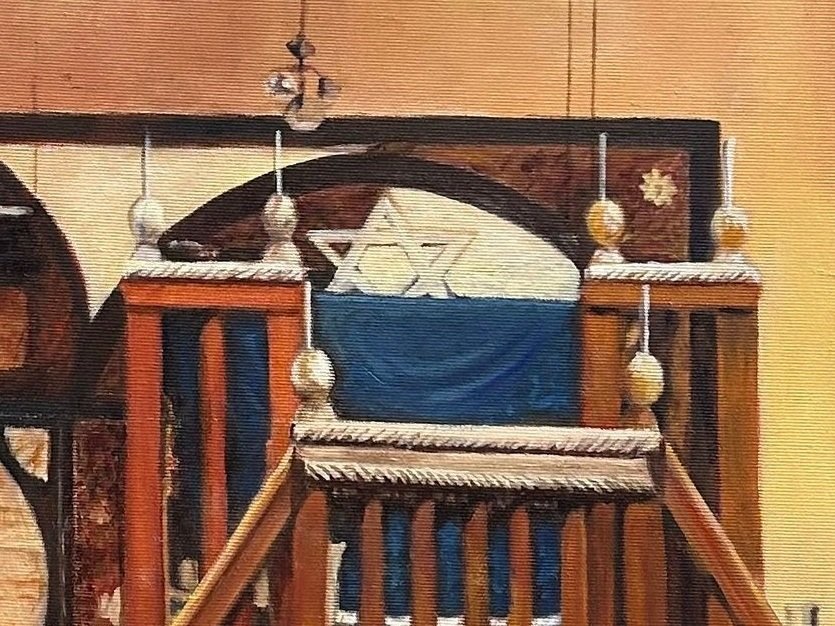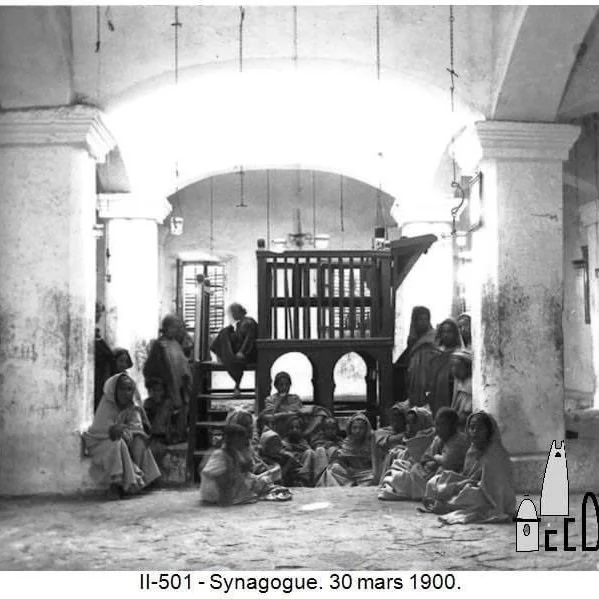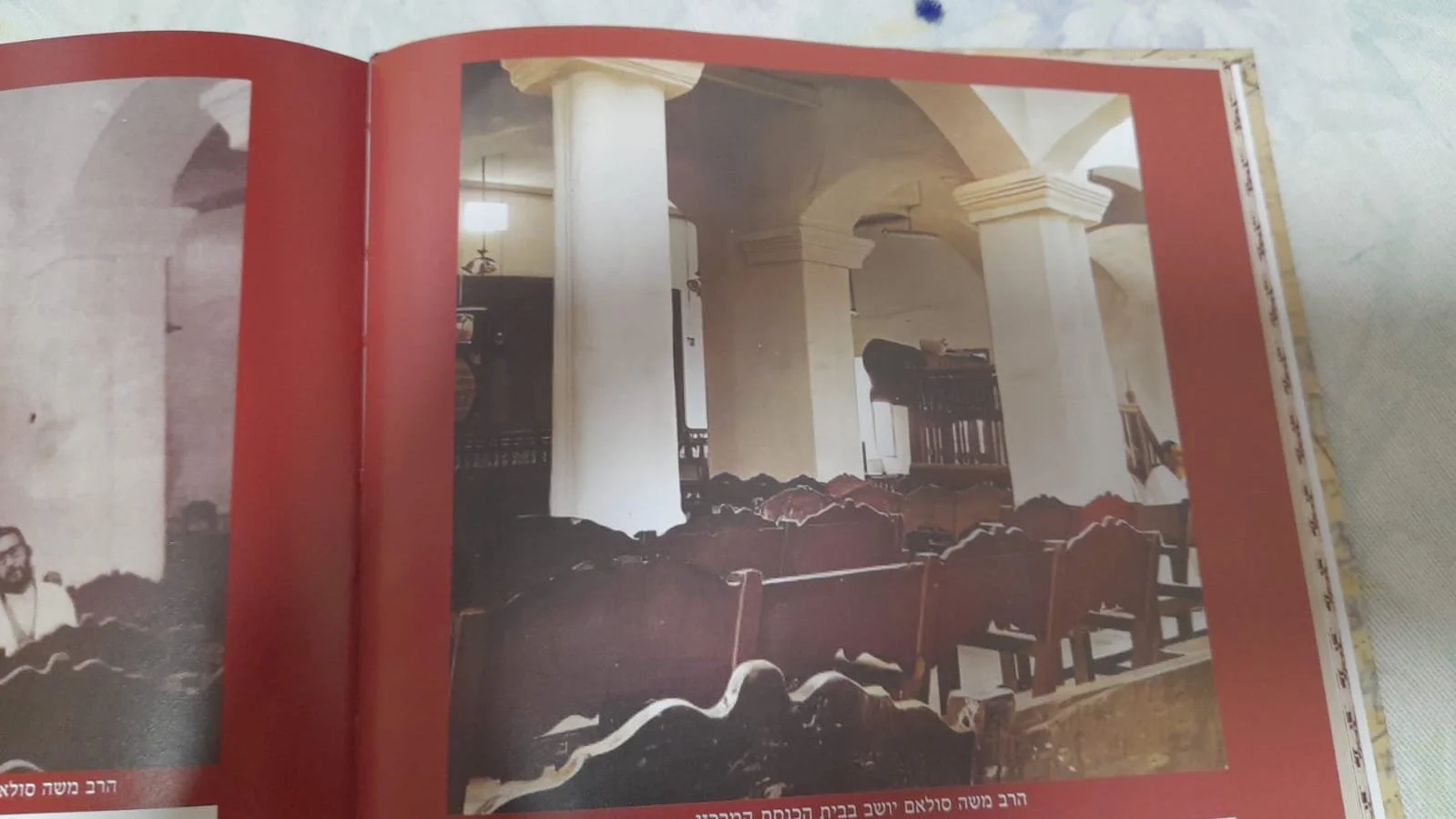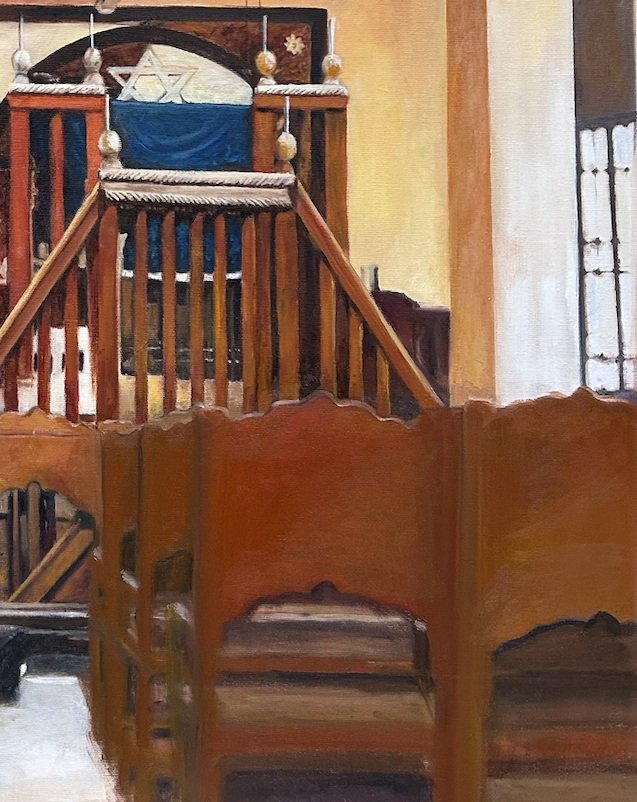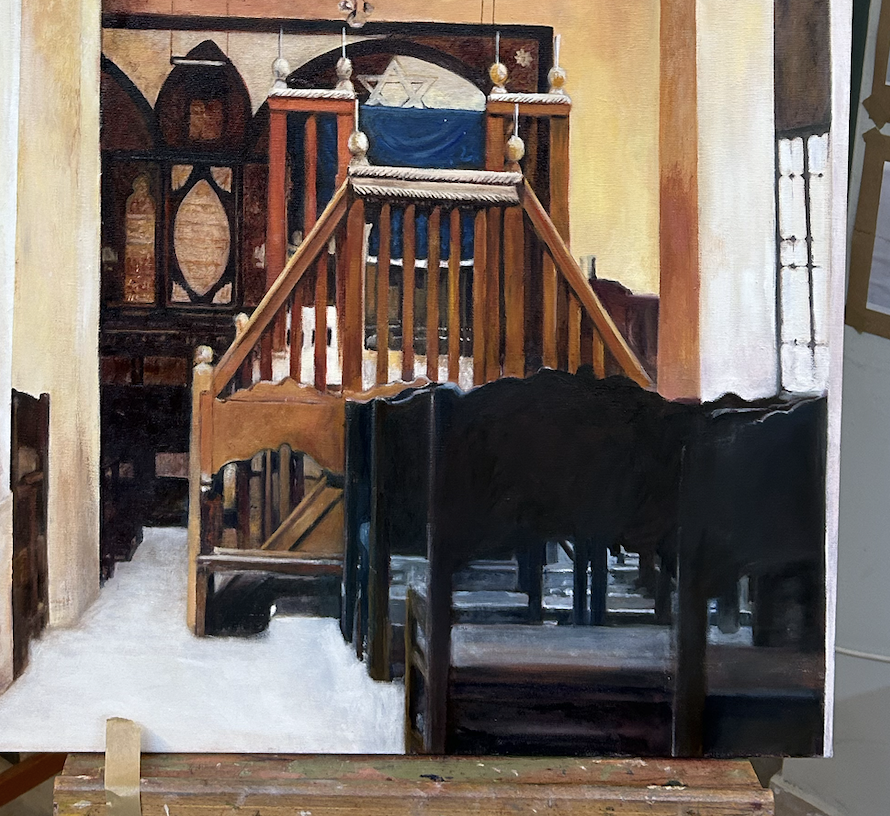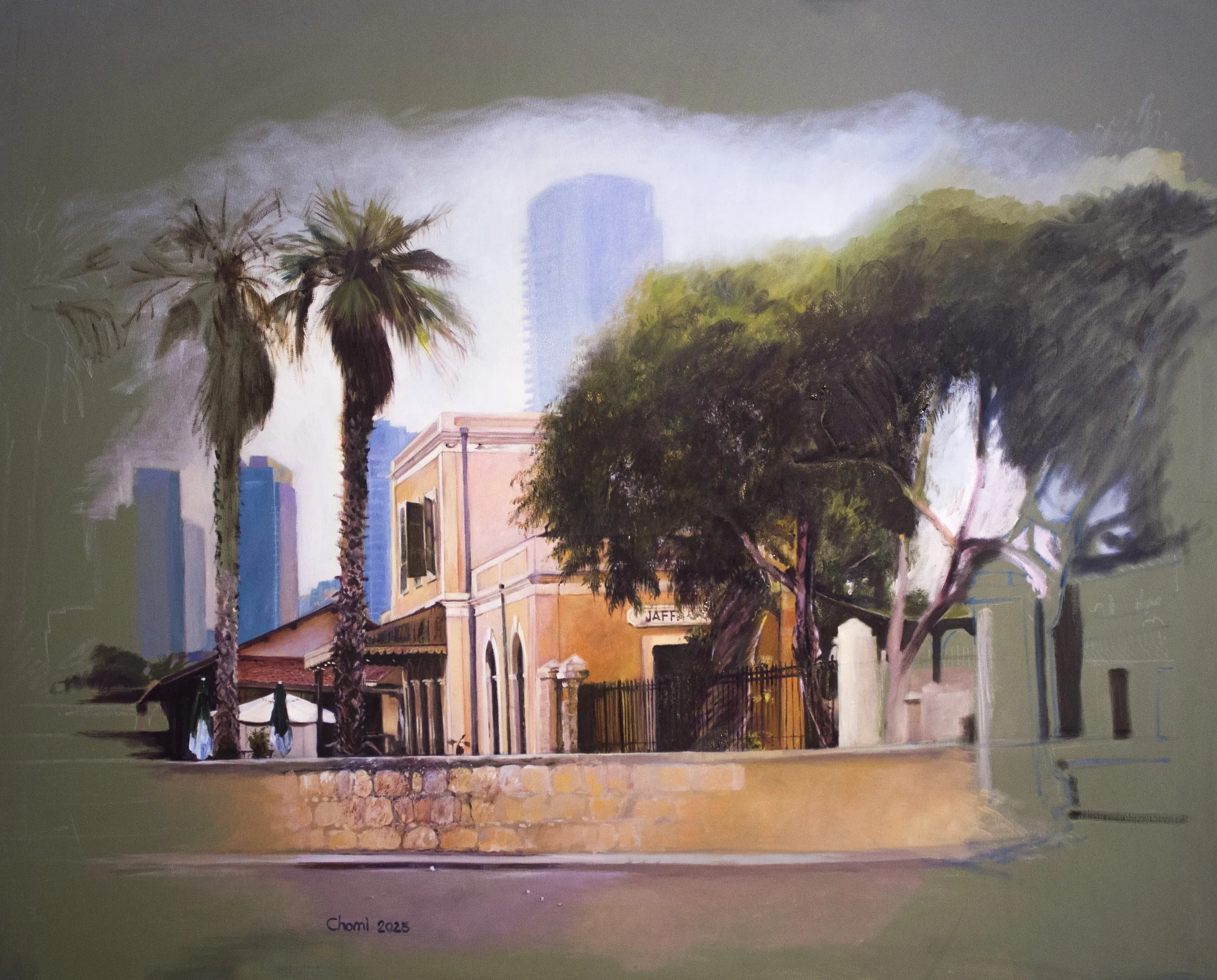
ס
Art blog
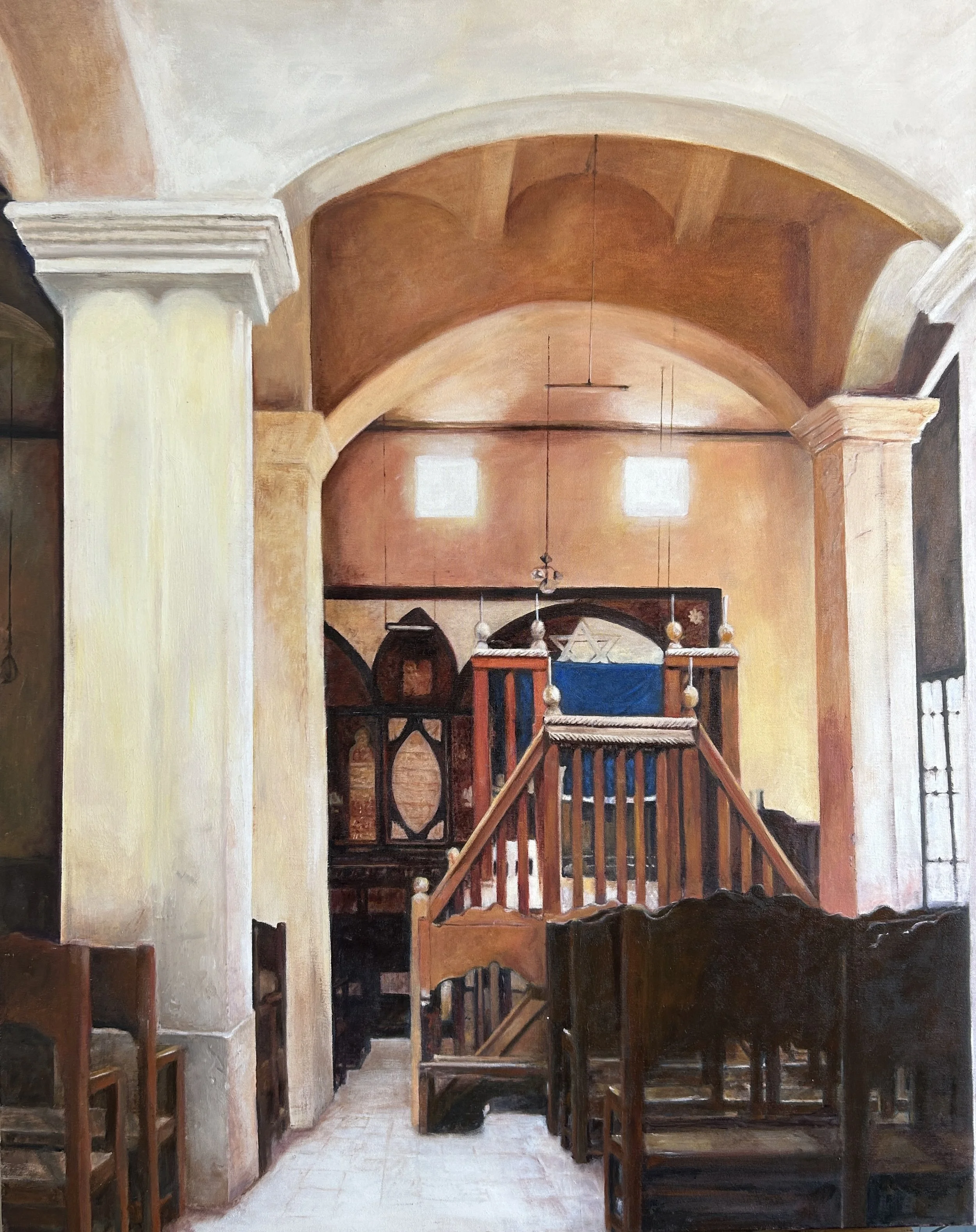
The Ghardaia synagogue painting process
As a realistic painter, I don't rely on my imagination, knowing that no matter how vivid it may be, it won't provide the same depth of information I can gather from observation or photographs, even if they are blurry. While I usually prefer to paint from clear images, this time, I agreed to paint the interior of the Gurdadia Synagogue from an old and blurry photograph in black and white. The moment the client showed me the picture, I felt a strong connection to that special place.
The The image of the Guardia synagogue,
Together with the client we found a video taken recently by travelers in the remnants of the synagogue. Sadly today the place has been destroyed and abandoned and is in ruins, but the outer walls, the pillars, some of the inner walls, and a staircase that leads to the mikveh remained. From the video I had the ability to understand the style of construction and the light sources into the space which was different from the buildings surrounding it
Later on the client shared that the people of that community were the descendants of the Jews that were exiled from Spain, and that explains the unique style of construction. The synagogue served the local Jewish community of Ghardaia which is located in northern Africa and it was built in an Italian Style. The communities history began with the explosion from Spain and is dense with glorious Jewish tradition, as well as many terrible tragedies and pogroms , culminating in the last pogrom just days after the Yom Kippur war.
Days after Yom Kippur war, the french government warned the Jews of a planned terror attack by their Muslim neighbors and sent buses in the middle of the night to rescue them. This the remaining members of the community had left gurdaya, some immigrated to France, and the United States, while others left for Israel, bringing with them Rimonim made of silver that adorned the synagogues bimah, along with Torah scrolls and more sacred items, which now adorn the bimah of the community's new synagogue in Dimona.
The capital stone columns show a European style
the Rimonim on the painting
After we had selected several images from various events that took place at the synagogue, I assembled the complete puzzle and I understand what I was actually seeing in the blurry photograph. Examining the color of the wooden benches in a close up photo, allowed me to grasp the tones of the furniture. Another image seemingly capturing a joyful family event , revealed lamps hanging from the ceiling. Fortunately, there was an additional photo showing the structure of the bimah's railing and the Rimonim that adorned it. The synagogue underwent renovations and changes over the years, and the client's acquired images did not show any consistency in the color of the furniture and walls. We had to decide which restoration to adhere to, slowly but surely, the puzzle had pieced itself together, down to the very last detail. It felt very satisfying to be able to represent it in the most authentic way possible.
This image is older but it has a clearer view of the shape of the bimah
Towards the end, I encountered a challenge regarding the events in the area of the benches on the right side in the front plane. In general images of the chairs and benches had brought up challenges because the presence of several seats and chairs is deceiving. In that specific area I hadn't had a clear photograph to go off of, so I decided to draw it the way I know, out of logic, laws of perspective, light and shadows. The result hadn't satisfied me so I tried to concentrate as hard as possible on the original blurry image, painting the stains and shape pixel by pixel. That's how I had "built" that whole area in the most authentic way.
At this time the benches didn't satisfy me
By this time I had already been content from the area
Chomi Groman

